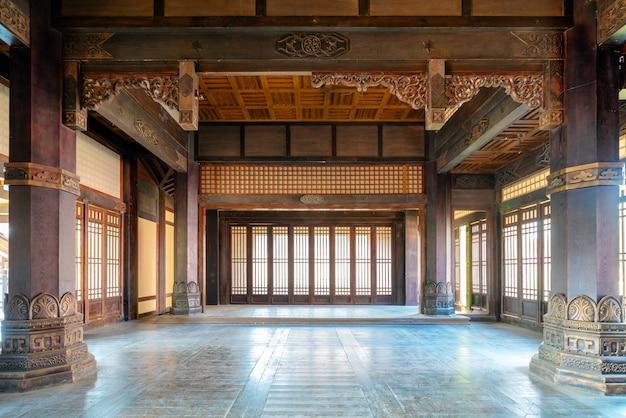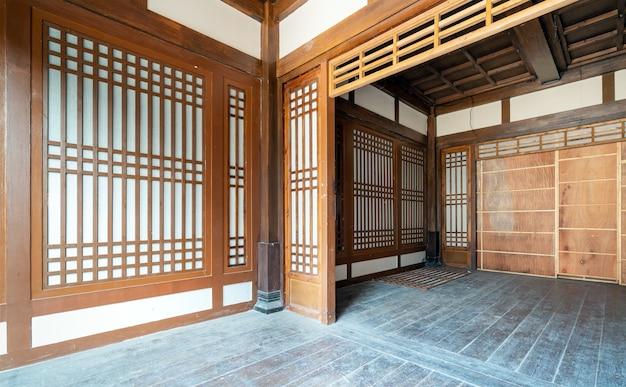In the rich tapestry of Chinese history, the Qin and Han dynasties stand as two influential periods that shaped the nation’s culture, politics, and economy. Spanning from 221 BC to 220 AD, these dynasties laid the foundation for a unified China, leaving behind a profound legacy that still resonates today.
Delving into the parallels between the Qin and Han dynasties offers a unique perspective on the continuous evolution of Chinese civilization. Despite their distinct characteristics and accomplishments, these dynasties share intriguing similarities that connect their narratives and enhance our understanding of ancient China. From their administrative systems to the imprint of the Silk Road, exploring these commonalities sheds light on the enduring impact of these two dynasties.
Join us on an exploration of the uncanny resemblances between the Qin and Han dynasties and uncover the stories that have shaped China’s historical fabric. From political strategies to cultural exchanges, we’ll navigate the intricate landscape of these dynasties to reveal the integral links that bridge the gap between them. So, grab your virtual time-travel gear as we embark on this captivating journey through China’s past!

Similarities between the Qin and Han Dynasties
Political Systems: Centralized Authority
The Qin and Han dynasties, despite having their own unique characteristics, shared several similarities. One of the most significant similarities was the centralized political systems that both dynasties implemented.
Qin Dynasty: The Iron Fist
Under the rule of the Qin Dynasty (221-206 BCE), the first imperial dynasty of China, a strict autocratic system was put in place. Emperor Qin Shi Huang was notorious for his ruthless governance. He centralized power by dividing the empire into administrative districts and appointing officials to oversee each region.
Han Dynasty: Balancing Act
The Han Dynasty (202 BCE – 220 CE) followed a similar path in terms of governance. The emperor held absolute authority and established a centralized bureaucratic system. However, the Han Dynasty took a different approach by adopting a more inclusive ruling strategy, allowing some regional autonomy and integrating Confucian principles into their governance.
Emperor Worship: Cult of Personality
Both the Qin and Han dynasties embraced the practice of emperor worship to solidify their authority and promote loyalty among their subjects.
Qin Dynasty: Eternal Emperor
Emperor Qin Shi Huang took the concept of self-glorification to a whole new level. He was obsessed with immortality and believed that he could rule forever. Consequently, he built the grand mausoleum complex with the famous Terracotta Army to accompany him in the afterlife.
Han Dynasty: The Mandate of Heaven
The Han emperors, while not as fixated on immortality, relied on the concept of the Mandate of Heaven to legitimize their rule. According to this belief, the emperor was granted the divine right to rule as long as he governed with virtue and righteousness. This religious and political ideology helped maintain social harmony and reinforce the emperor’s authority.
Standardization and Infrastructure
Another notable similarity between the Qin and Han dynasties was their emphasis on standardization and infrastructure development.
Qin Dynasty: Emperor of Uniformity
Qin Shi Huang aimed to consolidate power by unifying various aspects of Chinese society. He implemented wide-ranging standardization measures, such as standardizing the script, currency, weights, and measures. Additionally, he initiated grand construction projects, including the Great Wall of China, to protect the empire from external threats.
Han Dynasty: Connecting the Empire
The Han Dynasty continued the efforts of standardization and infrastructure development initiated by the Qin Dynasty. They improved road networks and built canals, enabling efficient transportation and communication within the empire. These advancements fostered economic growth, facilitated cultural exchange, and strengthened the unity of the Han Dynasty.
Intellectual Pursuits: Scholarly Excellence
Both the Qin and Han dynasties recognized the importance of intellectual pursuits and made significant contributions to Chinese scholarship.
Qin Dynasty: The Burning of Books
Despite the infamous “Burning of Books and Burying of Scholars” during the early Qin Dynasty, this era also witnessed the standardization of writing script and the compilation of important historical texts. These actions laid the foundation for future scholarly works.
Han Dynasty: Literati Culture
The Han Dynasty placed great value on education and established academies to nurture scholarly talents. The rise of Confucianism during this period influenced the emphasis on moral virtues and social harmony. Renowned scholars, such as Dong Zhongshu and Sima Qian, flourished during this time, leaving a lasting impact on Chinese intellectual history.
In conclusion, the Qin and Han dynasties shared similarities in their political systems, emperor worship practices, emphasis on standardization and infrastructure, as well as their recognition of intellectual pursuits. These similarities contributed to the shaping of Chinese civilization and laid the groundwork for the future development of the country.

Frequently Asked Questions About the Similarities between the Qin and Han Dynasties
Why Was the Silk Road Dangerous
The Silk Road was a treacherous route that stretched for thousands of miles, making it inherently perilous. Travelers faced numerous hazards, including bandits, harsh weather conditions, and unpredictable terrain. Additionally, the vastness of the Silk Road made it difficult to navigate, increasing the chances of getting lost or encountering dangerous animals. So, if you were thinking of embarking on a vacation along the Silk Road, don’t forget your survival kit!
Is There a Modern Version of the Silk Road
While the original Silk Road may be ancient history, its spirit lives on in the form of the modern-day Belt and Road Initiative (BRI). In 2013, China launched this ambitious project, aiming to revive the spirit of connectivity and trade along the historic Silk Road. Just like its predecessor, the BRI seeks to foster economic cooperation and cultural exchange between countries across Asia, Europe, and Africa. So, grab your passport, and join the modern-day adventurers on this new Silk Road!
Which of the Following Statements Is the Most Accurate Comparison of the Qin and Han Dynasties
a) The Qin dynasty was like the blazing fire that burned bright but quickly fizzled out. The Han dynasty, on the other hand, resembled a steady flame that endured for centuries.
b) Comparing the Qin and Han dynasties is like comparing a sprinter to a marathon runner. The Qin sprinted to power, but the Han’s endurance won the race.
c) The Qin and Han dynasties were akin to two siblings. The Qin was the older, more impulsive sibling, while the Han was the younger, wiser and more enduring one.
d) Both the Qin and Han dynasties were like beautifully crafted porcelain, each showcasing their unique glaze and design.
Correct answer: b) Comparing the Qin and Han dynasties is like comparing a sprinter to a marathon runner. The Qin sprinted to power, but the Han’s endurance won the race.
What Are the Similarities between the Qin and Han Dynasties
The Qin and Han dynasties share several remarkable similarities. Here are a few:
-
Centralized Governance: Both dynasties relied on a strong central government to maintain control over their vast territories. They implemented standardized systems for law, taxation, and administration, ensuring uniformity across their domains.
-
Emphasis on Agriculture: Recognizing the importance of agriculture in sustaining their empires, both the Qin and Han dynasties implemented policies to support and promote farming. They established irrigation projects, introduced new crops, and encouraged technological advancements in agriculture.
-
Construction Projects: Both dynasties undertook massive construction projects to solidify their rule and showcase their power. The Great Wall of China, although initiated by the Qin, was significantly expanded during the Han dynasty.
-
Military Innovations: The Qin and Han dynasties revolutionized warfare in ancient China. They developed advanced military strategies, employed standardized weapons and armor, and organized large armies capable of defending the empire’s borders.
-
Cultural Achievements: The Qin and Han dynasties witnessed remarkable cultural achievements. They both contributed to the development of Chinese literature, art, and philosophy, leaving a lasting impact on Chinese culture.
What Impact Did the Silk Road Have on China under the Han Dynasty
The Silk Road had a profound impact on China during the Han dynasty. It served as a vital conduit for cultural and economic exchange between East and West. The trade routes facilitated the flow of goods such as silk, spices, and precious metals, enriching China’s economy and fostering international trade. Moreover, the Silk Road acted as a bridge for the transmission of ideas, technologies, and religions. Buddhism, in particular, made its way to China via the Silk Road, greatly influencing Chinese spirituality and shaping the country’s identity.
Should the Silk Road Be Renamed
Absolutely not! The Silk Road has an undeniable historical significance that should be celebrated. Despite its dangerous nature, it played a crucial role in connecting civilizations and sparking cultural diffusion. Renaming it would be like erasing a vital piece of our past. So, let’s preserve the legacy of the Silk Road and keep its name alive for generations to come!
What Religions Were on the Silk Road
The Silk Road facilitated the transmission of various religions across continents. Some of the prominent religions that traveled along this ancient trade route include:
-
Buddhism: Originating in ancient India, Buddhism found its way to China and other parts of Asia through the Silk Road. Its teachings spread and greatly influenced the regions it touched.
-
Zoroastrianism: This ancient Iranian religion also made its way to China through the Silk Road. Although it eventually declined in popularity, it left traces in Chinese culture and history.
-
Manichaeism: Founded by the prophet Mani, this religion combined elements of Christianity, Buddhism, and Zoroastrianism. It gained prominence along the Silk Road, influencing various cultures it encountered.
-
Nestorian Christianity: Nestorian Christianity, an early branch of Christianity, reached China through the Silk Road. It had significant influence and presence during the Tang dynasty.
-
Islam: As the Islamic empire expanded, it established trade connections along the Silk Road. Muslims traders and merchants played a vital role in spreading Islam across various regions.
So, the Silk Road was not only a conduit for material goods but also an avenue for the exchange of ideas, philosophies, and religious beliefs.
Hope you found these FAQs helpful and entertaining! If you have any other burning questions about the Qin and Han dynasties, feel free to ask. Happy to enlighten you with more ancient wonders!
